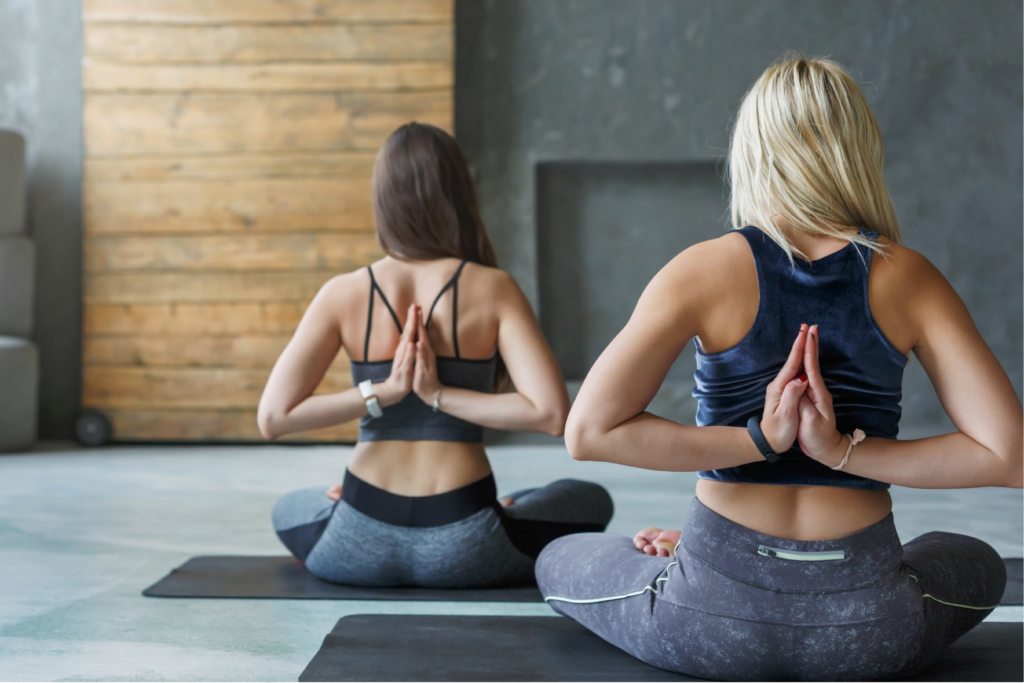Are You Practicing Intuitive Exercise?
December 15, 2021

What motivates you to exercise? Depending on your reasons, it may be time to adjust your mindset. Intuitive exercise is engaging in a workout based on what your body needs and enjoys. You may have heard of intuitive eating. Intuitive exercise follows the same principles of connecting and listening to your mind and body to figure out what it needs that day. This shift in mindset allows exercise to become something you look forward to, rather than dread. Here are some tips on how to move intuitively.
What is intuitive exercise?
Intuitive exercise or intuitive movement is the practice of connecting your body’s needs and feels to exercise. Instead of engaging in exercise because you “should” do it, you lean into your internal cues to figure out the type, length, and intensity of the workout.
This approach to exercise means you are choosing to move so you feel good and enjoy it. Health benefits, such as weight management, take a backseat.
People who move intuitively, ask questions like:
- What type of exercise would make my body feel better today?
- Does my mind and body need a high-intensity workout?
- What type of movement do I feel like doing?
- Would I enjoy this type of exercise?
- Can I connect with others during my exercise session?
Intuitive exercise doesn’t mean you can’t follow an exercise plan or schedule. Yet, it gives you the flexibility to change the plan when your mind and body need something different.
Health Benefits of Intuitive Exercise
The benefits of exercise and body movement are well-established. Unfortunately, many people focus on how exercise can help manage weight. Exercise has become a way to burn off calories and a part of many diet plans. Most people lose interest in exercise when they focus on these extrinsic factors. Plus, your brain can’t hold on to these thoughts for more than a few minutes.
Intuitive exercise focuses on intrinsic factors. It encourages you to think of exercise as self-care and self-love.
There are many other health benefits to exercise that can help shift your focus away from weight loss, such as:
- Improved mood
- Increased muscle mass and strength
- Increased energy
- Better sleep
- Feelings of accomplishments
- Improved balance and flexibility
- Better memory and attention
Ways to Practice Intuitive Movement
Check-in with your mind and body.
A quick mind and body scan is a great way to assess where you are physically and emotionally. Start with your toes and feet and check in with how each part of your body is feeling. Calf muscles, knees, hips, stomach, etc – making your way up your body to your mind. Assess whether something is tight, sore, stressed, and feels good. Once you’ve reached your mind, check-in with your motivation and what would help your emotional state.
There are days when my mind wants to run a few miles, but my body says it needs a rest day. It’s important to satisfy both needs. Maybe it’s taking a brisk walk or doing vinyasa yoga. These are the days I appreciate being an intuitive exerciser because I have the flexibility to adjust in the moment.
Avoid all-or-nothing thinking with exercise.

Exercise plans are helpful and can give us guidance, especially if you’re taking part in something new or training for an event. Yet, when you don’t give yourself any flexibility in the plan, it can create more stress. There are days that exercise may not happen and with the wrong approach, you may end up feeling guilty or hyper-focused on what didn’t do.
With intuitive exercise, you show yourself some compassion and understanding. Self-compassion is linked to increased motivation and improved health benefits, leading to healthy habits in the long run.
You can still maintain a plan with intuitive exercise. This often looks different for everyone and can depend on your exercise history and overall goals. For me, this means that I include 1-2 days a week that I don’t plan on running. The days can be any day of the week that my body needs it to be.
I also like to include ranges for goals, instead of a strict number. That way I can have some flexibility if I want to change up the distance during one of my runs.
Choose types of movement you enjoy.
We have so many responsibilities because we’re adults and humans. I’m a firm believer that exercise should not be one of these dreaded responsibilities. There is no reason to keep doing a type of exercise if you hate it. If you dread your exercise session or lose motivation quickly, find something else.
Try to engage in activities you enjoy doing and what feels best to your body. For many people who move intuitively they explore different movements.
Start by asking yourself a few questions:
- What type of movement did I enjoy doing as a kid?
- Where would I find the most enjoyment: in the gym, outside, at home?
- Do I like exercising with other people or do I want time alone?
Once you’ve answered these questions, then look into types of exercise that align with your answers.
Include rest and recovery days.
Rest days allow your mind and body time to recover. Post-exercise recovery is essential for any type of exercise program. In fact, individuals who include recovery days in their training program are at a lower-risk of overtraining and injury.
Many exercise plans follow the F.I.T.T. (frequency, intensity, time, type) training guidelines. This can also apply to rest and recovery days.
As you develop more intuition and practice with your exercise needs, it gets easier to determine the number of days you need to rest. Sometimes it may just require one day a week. If you’ve taken part in a high-intensity or endurance event, you may need additional days of rest and recovery.
Rest may also mean resting for a specific type of exercise. For example, runners are often encouraged to cross-train and we can consider these rest days from running.
Develop a healthy relationship with exercise.

Mindful exercise can help you get a handle on your relationship with exercise. I’m grateful that many people are looking to move away from the all-or-nothing mentality, and instead wanting to improve quality of life with joyful movement.
For some of us, exercise has been a punishment for many years. It can take time to repair and create an alternative approach to movement. One thing that is important to do is to recognize your triggers for exercise.
Take a few minutes to list your negative thoughts and behaviors around exercise. For example, being in a spin class with a leaderboard could trigger the need to push yourself beyond your abilities. If you consistently feel weak and exhausted at the end of exercise sessions, this is a sign that you’re not moving intuitively.
Reach out for support.
Compulsive exercise is when movement creates more harmful outcomes than good ones. There aren’t clinical guidelines on what defines compulsive exercise, and it’s not a clinically diagnosed mental disorder.
Yet, there are signs of compulsive exercise:
- it negatively affects important social relationships
- you’re consistently dealing with an injury
- feel anxious until you exercise
- won’t take time to rest and recover, even when tired, sick, or injured
- can’t maintain a healthy body weight
If you believe you are dealing with compulsive exercise, reach out for support.
Be patient with yourself.
It can take time to figure out what types of movement feel good. Life changes, transitions, overall health, and social support all impact our intuition. Be kind and patient with yourself as you’re building up your confidence.
Pay attention to what feels good and keep going back for more of that!
[…] nutrition, incorporating enjoyable forms of movement into daily life can be beneficial for hormone balance. Working with dietitians who use non-diet […]
[…] yourself freedom to intuitively choose the movement that feels good when it feels good. With this you are more likely to reap these […]
[…] Exercise freedom is a part of food freedom. This season can be extremely chaotic and if getting a workout in daily doesn’t fit into your schedule, no problem! Being able to prioritize your life events without feeling the need to “burn” off food or earn your food is the most important thing of exercise freedom. Take the time to sit and relax this holiday season without the guilt of not exercising! […]
[…] As we often say around here, working out should be fun. Exercise is an act of self care, not a punishment. Just because a workout routine “worked” for you in the past doesn’t mean you need to stick to it for life if it makes you miserable. You won’t “lose progress” by switching it up and trying something new. In fact, you may feel yourself get stronger with change. Instead, experiment with different types of movements, maybe something you have always wanted to try. […]
[…] kind of regular exercise and movement can fall under the intuitive exercise umbrella. This means walking, gardening, lifting weights, playing outside, hiking, etc. Traditional types of […]